The Different Types of Catalytic Converters
What is a Catalytic Converter?
Following the Clean Air Act of 1970, automakers were tasked with reducing tailpipe emissions from the vehicles they produce. A critical component in satisfying emissions regulations has been the catalytic converter, sometimes called a “converter” or simply “cat” for short. Catalytic converters use chemical processes to convert harmful pollutants into less harmful emissions.Early catalytic converters were a two-way design, whereby exhaust gases flowed through a substrate that exposed them to heavy metals (such as platinum and palladium) as a means of causing chemical reactions. Two-way catalytic converters do a poor job of reducing NOx (nitrogen oxides), which led to the development of three-way plus air converters. In addition to the two oxidation catalysts, they add a third chemical process: a reduction catalyst that converts NOx into N2 (nitrogen) and O2 (oxygen). Most vehicles built since the early 1980s use three-way catalytic converters that store and release oxygen as needed.
What is a Direct-Fit Catalytic Converter?
Features:
- Little to no exhaust fabrication required
- Easy to install
- Bolt-on design
- Vehicle Specific
What is a Universal Catalytic Converter?

As the name implies, universal catalytic converters can be installed in almost any vehicle, as long as the diameters of the inlet and outlet tubes are the same on the converter and the exhaust system, and it is the correct converter for the particular vehicle and the state it will be registered in. (For more information on how to buy a catalytic converter, click here.)
Features:
- Universal fitment
- Requires professional installation
- Affordable
What is a Manifold Catalytic Converter?

Similar to direct-fit converters that bolt directly into a vehicle’s exhaust line, manifold catalytic converters are integrated into a vehicle’s exhaust manifold, a component that collects exhaust gases from multiple cylinders into a single pipe. Because of their specialized design and fitment for specific vehicle models, manifold converters are typically more expensive than direct-fit or universal converters. In terms of installation, this type of converter requires the entire exhaust manifold to be removed and replaced.
Features:
- Specialized design & fitment
- Requires professional installation, or advanced mechanical knowledge
What is a CARB Compliant Catalytic Converter?
The California Air Resources Board (CARB) has its own set of environmental regulations that CARB compliant catalytic converters must meet for vehicles registered and operated in California, Colorado, New York - these limitations do not apply to vehicles registered and operated outside of California, Colorado and New York. Introduced in 2009, the CARB Compliant law states all aftermarket catalytic converters sold in California, Colorado and New York must meet low emission vehicle (LEV) standards. CARB is mostly known for providing innovative approaches for complying with air pollution rules & regulations. Even though CARB regulations are currently implemented in California, Colorado and New York many other states are following the same structure.
What are Federal/ EPA compliant Catalytic Converters?
If the vehicle is registered and operated outside of California, Colorado and New York there are two Federal EPA compliant catalytic converter choices:
- Heavy Metal Catalytic Converters: HM converters are suitable for non-California (49-state) vehicles and are certified by the Environmental Protection Agency (EPA), but not CARB.
- OEM-grade Catalytic Converters: OEM-grade converters meet both EPA and CARB standards. However, if a vehicle is registered in California, only CARB-approved converters can be used.
Need to buy a new catalytic converter? Give us a call at 1-800-990-0905 and we’d be happy to help.
SHOP CATALYTIC CONVERTERS:

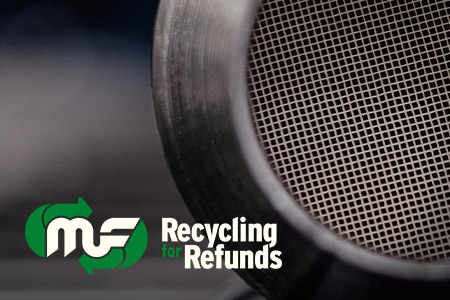
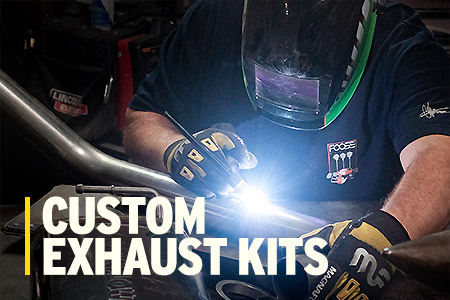






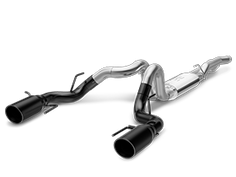
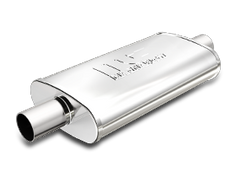
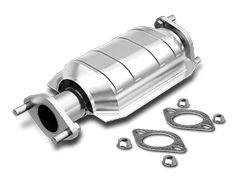
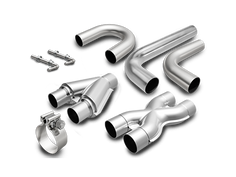
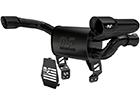










Comments
Terry Rihel on
Can you help me with the part number for a Catalytic Converter.
1998 Toyota Tacoma
2.4L DLX Regular Cab
Direct Fit (12.5” long w the 2 bolt flange.
Not sure how MF measures the Flange. Mine looks to be 3 5/8” center to center of the bolt holes.
Thank you , just want to get it right.
Terry
Roberto Lua on
I have a 2015 Kia soul that did not get called in for recall but has all the symptoms and I now need a catalytic converter but I have to pay for it could I just get a universal one cut and weld why do I need to get the whole exhaust? Keep in mind that I for some reason have one of those vehicles that didn’t get included in the recall. Thank you in advance.
Jalisa butler on
Hello,
I’m emailing you guys to see what kind of catalytic converter will I need for my car. I have a 2017 honda accord 2.L?
Angel Lopez on
How much is a converter for 2013 Santa Fe sports 2.0 T
Dan Whitman on
Hi, I just swapped a 392 6.4L into a Jeep Gladiator and would like to install two high flow cats. The exhaust diameter is 3". I intend to make this CARB compliant and hookup the downstream O2 sensors so integrated post cat bungs would be nice to have as well. Please help me determine the appropriate part numbers for this application.
Thanks!
Michael Prater on
I’m looking for some high flow offroad cats. Need a pair of 3” and the main body needs to be around 7” or less in length. For a built NA 6.2L for a 2013 yukon.
Emmanuel on
Some one took my catalytic converter in so doing they cut the pipe that goes from the converter to the manifold. I bought the catalytic converter do the sell the part that connects it to the manifold? I need to knw what I will buy . Lexus sc 430